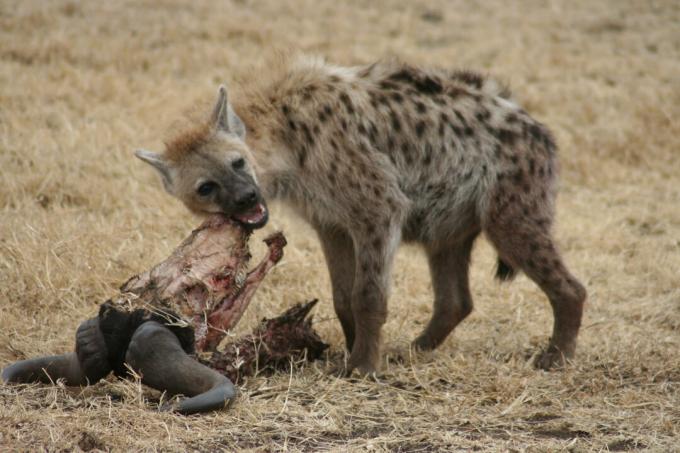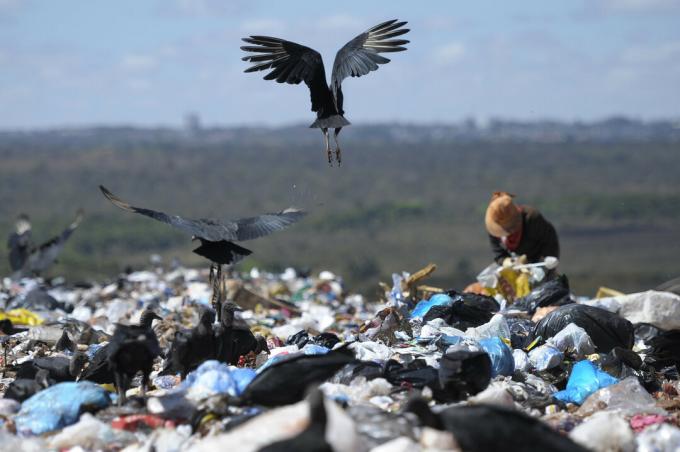Commensalism is an ecological relationship between organisms of different species, in which one of the organisms is benefited and the other is not harmed.
In commensalism, one of the organisms usually feeds on the food scraps of the other. The word commensalism comes from the Latin term commensals, which means "split the table".
Examples of Commensalism
remora and shark
The relationship between the remora and the shark is a classic case of commensalism. A remora is a fish that attaches itself to the body of sharks with suckers called apprehensions.
The remora remains attached to the shark and feeds on the food scraps that come out of the animal's mouth. It is a harmonious relationship, as the remora obtains food and the shark does not suffer any harm.

The fish feed on the food scraps that come out of the shark's mouth.
hyena and lion
Hyenas and lions also have a commensal relationship, as lions hunt and feed on their prey and the rest of this food is used by hyenas.
As lions eat first, they do not stop feeding and are not harmed by hyenas. Hyenas, in turn, benefit because they get their food without wasting energy.
 Hyenas feed on the remains of animals hunted by lions.
Hyenas feed on the remains of animals hunted by lions.
Vulture and human being
Humans are a species that wastes a great deal of food. This food is usually deposited in dumps and the vultures usually look for food in these areas.
For the vultures, this is an easy way to obtain food and for the human being, it does not matter whether the vultures feed on this leftover food.
 The vulture eats the food remains deposited in dumps.
The vulture eats the food remains deposited in dumps.
human being and Entamoeba coli
O entamoeba coli, located in the intestine of human beings, is a protozoan of the amoeba group that establishes a commensal relationship with man.
These protozoa feed on the remains of human digestion and under normal conditions do not harm individuals.
 The image shows the protozoan entamoeba coli, which it feeds on the remnants of human digestion.
The image shows the protozoan entamoeba coli, which it feeds on the remnants of human digestion.
Epiphytic trees and plants
The ecological relationship established between trees and flowers such as bromeliads and orchids can be considered by some authors as a case of commensalism.
This classification, however, is not consensual. In this case, the ecological relationship is not aimed at food and some authors argue that only food relationships can be classified as commensals.
Epiphytic plants attach themselves to trees to facilitate the incidence of sunlight on them. The flowers benefit from getting shelter and the tree is neither benefited nor harmed.
 Epiphytic plants attach to trees for shelter and sunlight.
Epiphytic plants attach to trees for shelter and sunlight.
The different types of ecological relationships
Ecological relationships can be intraspecific or interspecific and harmonic or disharmonious:
- Intraspecific: between organisms of the same species;
- Interspecific: between organisms of different species;
- Disharmonious: one of the organisms is harmed;
- Harmonica: one or both organisms benefit, and neither is harmed.
Some other examples of ecological relationships are:
- Mutualism: organisms of different species associate and both benefit;
- Tenancy: one of the species serves as a shelter for the other, without harming it;
- Parasitism: the organism that is parasitic takes nutrients from the organism of another species;
- Amensalism: one of the organisms inhibits the growth of the other, but obtains no harm or benefit;
- Cannibalism: one of the individuals feeds on another of the same species;
- Society: organisms of the same species collaborate with each other;
- Competition: organizations that compete for resources (food, territory);
- Predatism: an organism kills another of a different species to feed itself.
Learn more about mutualism.
